The Design Commission has approved revised designs for Oregon Square, which will now be split into two phases. The project by GBD Architects will redevelop four city blocks in the Lloyd District owned by American Assets Trust, with development on the western two blocks happening first. The first phase, which will include Blocks 90 and 91, will have a combined total of 619 residential units, 23,738 sq ft of ground floor retail and 169 underground parking stalls. The buildings will be arranged around a new pedestrian only public space, designed by landscape architects PLACE.
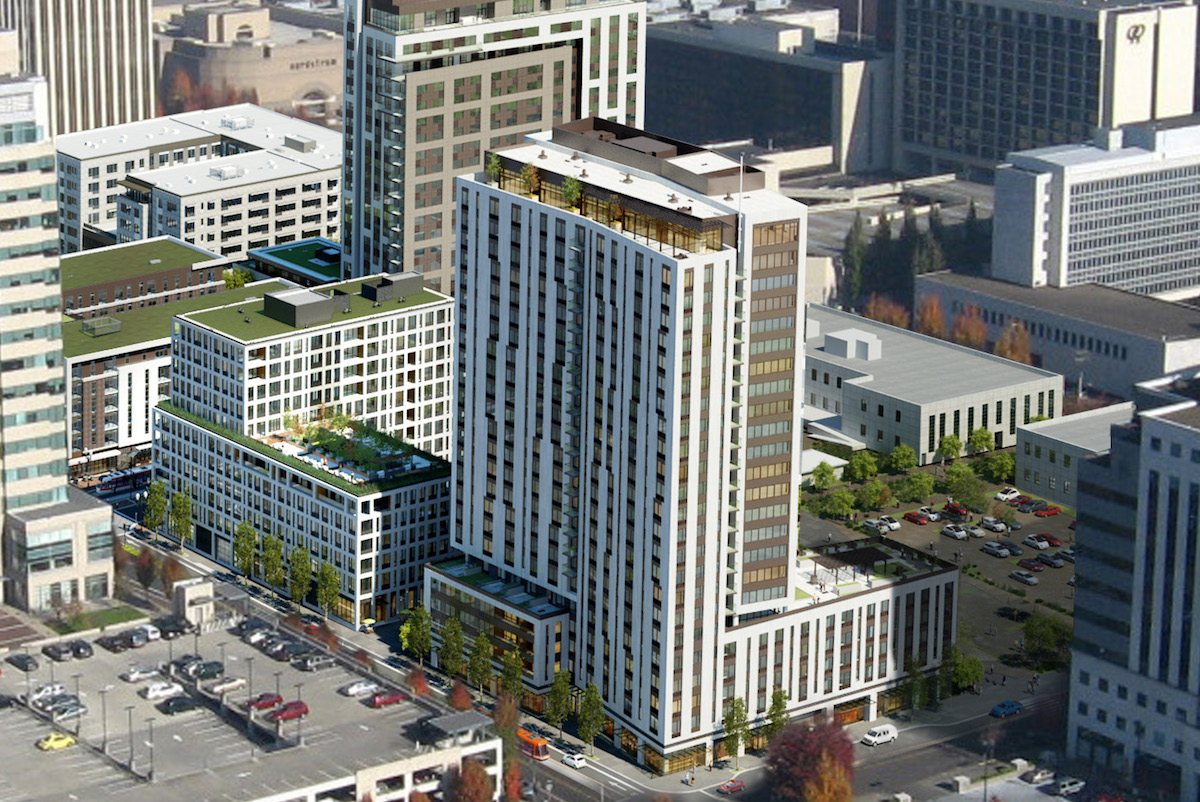
The Oregon Square site is a superblock bound by NE 7th Ave, NE Holladay St, NE 9th Ave and NE Oregon St. It is currently developed with four low rise office buildings, built by the Lloyd Corporation between 1939 and 1950. None are listed on the National Register of Historic Places, though all four have been identified as eligible for inclusion. The superblock is immediately to the south of Hassalo on Eighth, which was completed by the same design and development team in 2015.
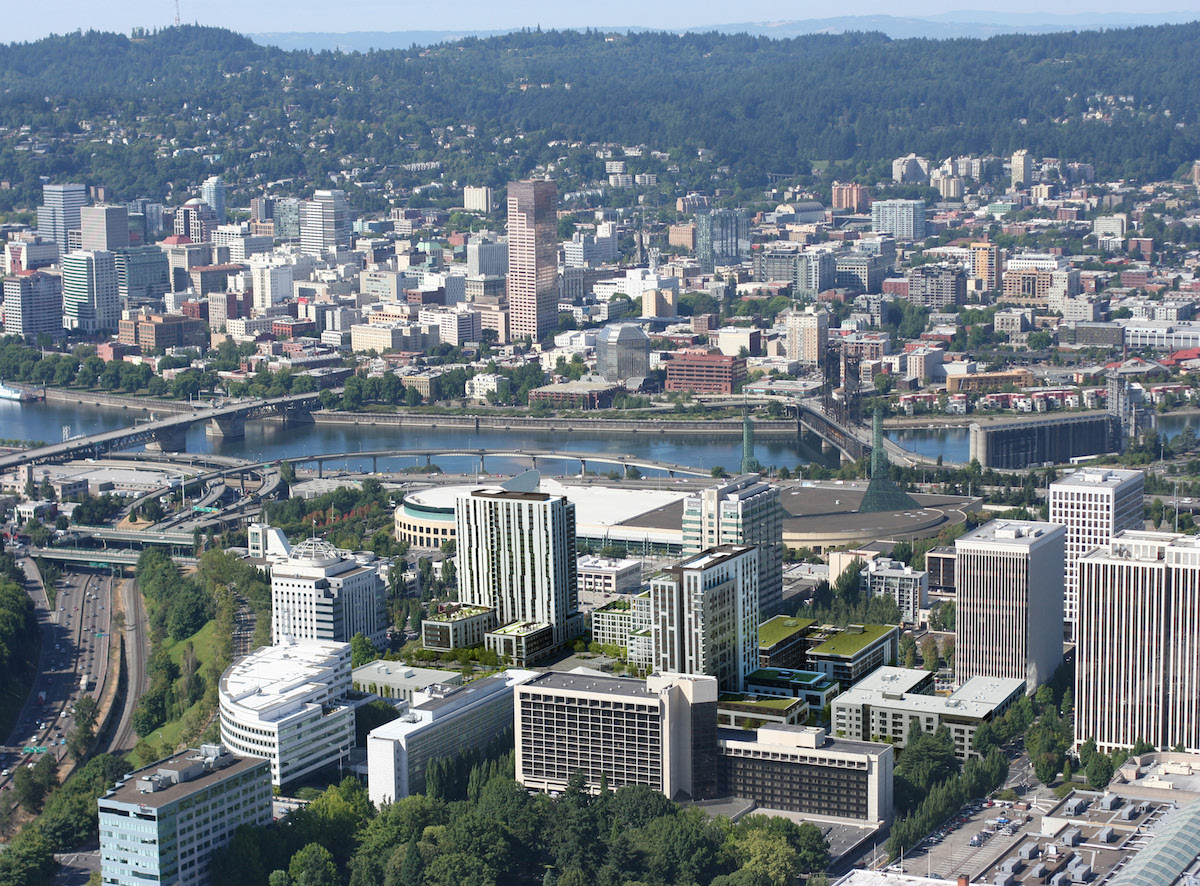
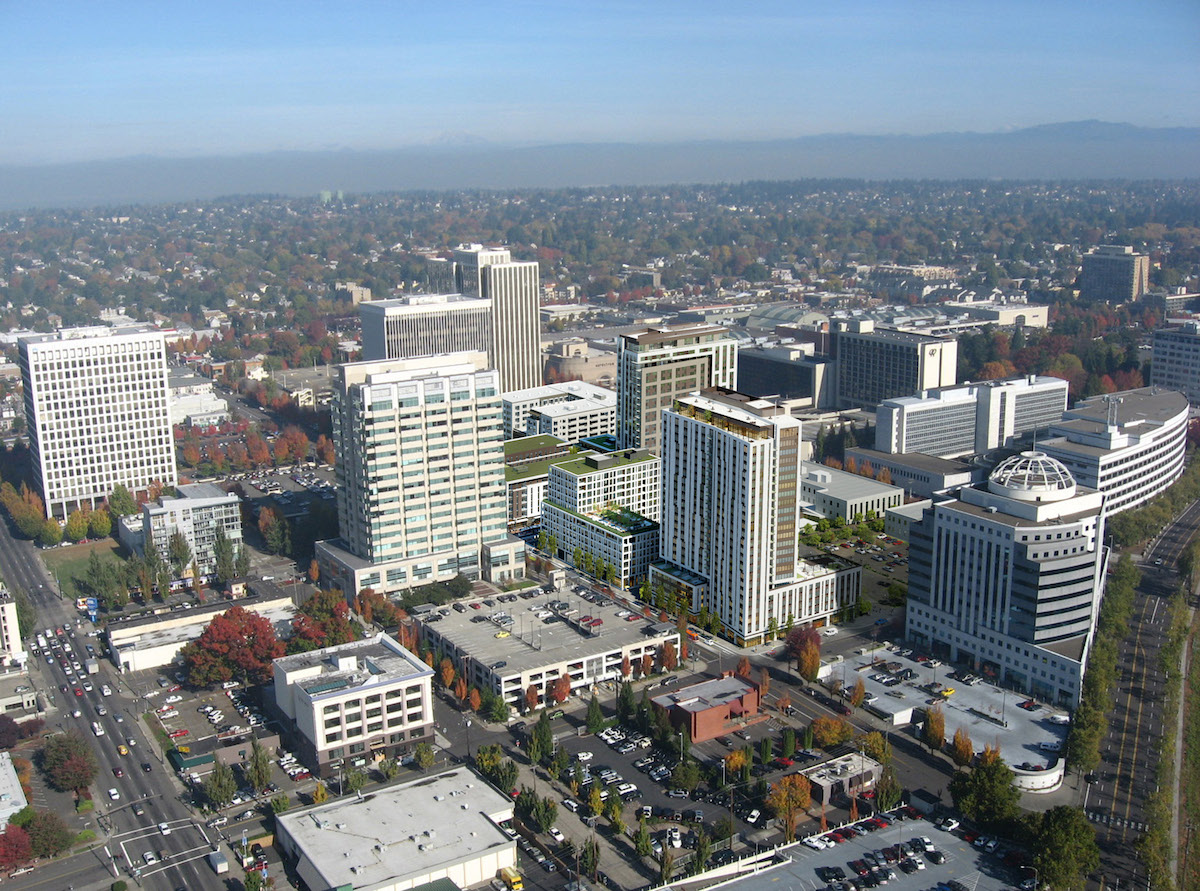
In the interim condition the two low rise office buildings on blocks 102 and 103 to the east of the site will remain.
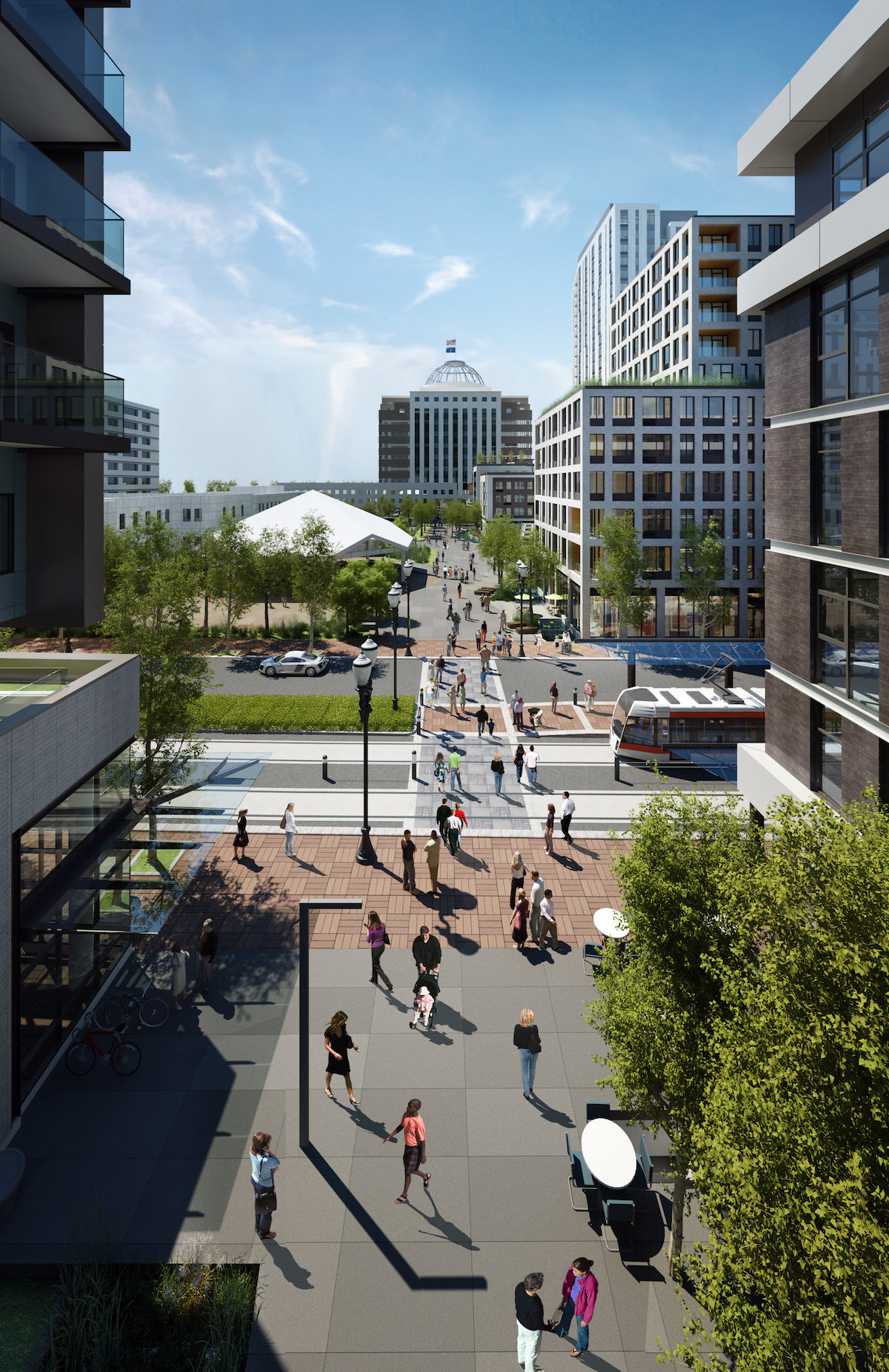
Phase II of Oregon Square would include construction of the two buildings at the eastern half of the site, which would contain 510 residential units, 23,607 sq ft of retail and 448 underground parking spaces. The combined Phase I and II would include 1,129 residential units, 47,345 sq of retail and 617 underground parking spaces. This represents a substantial increase in the number of residential units as compared with the originally proposed design, with a small drop in the amount of retail and a larger drop in the number of parking spaces proposed.
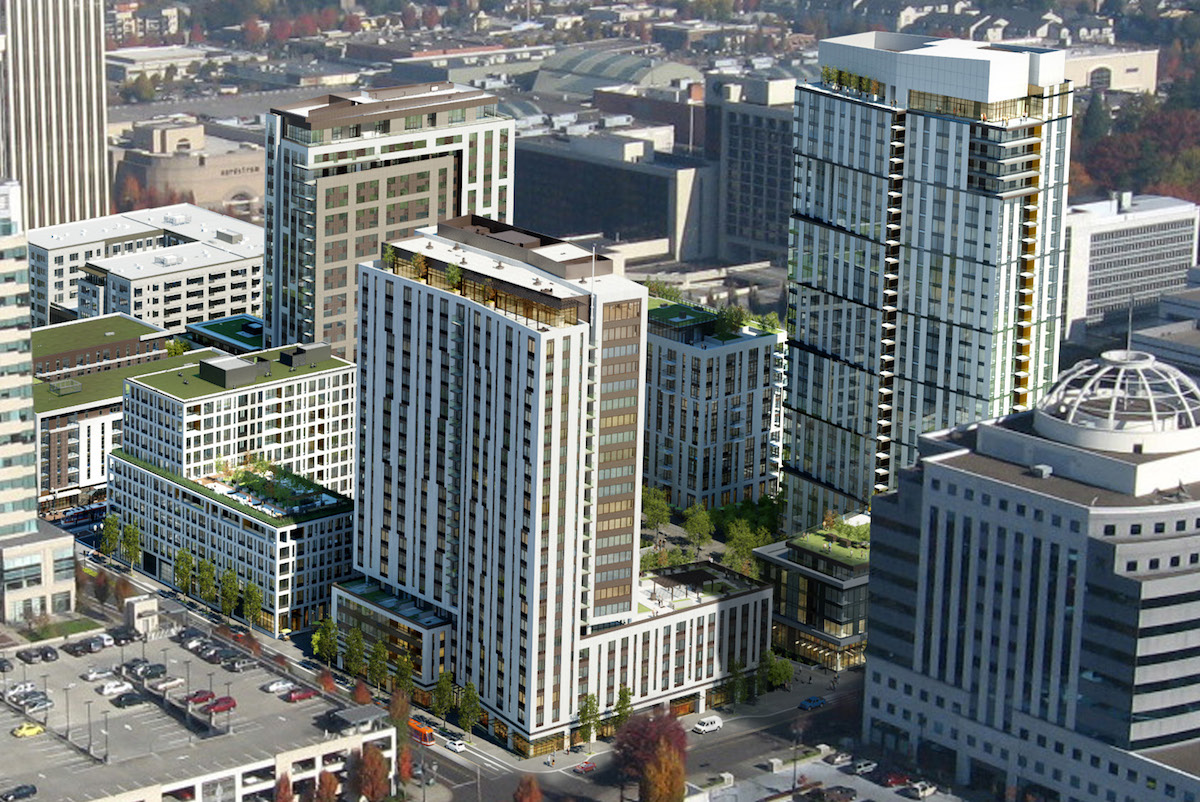
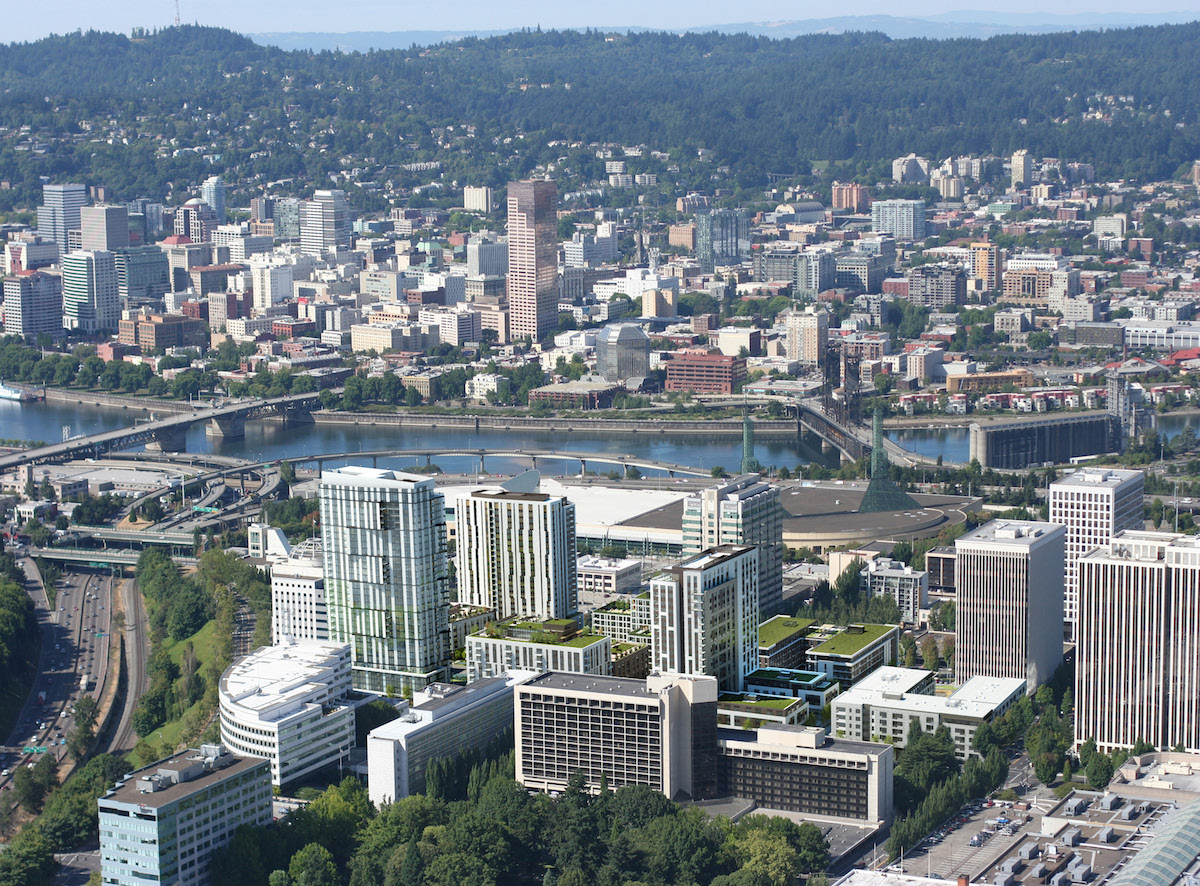
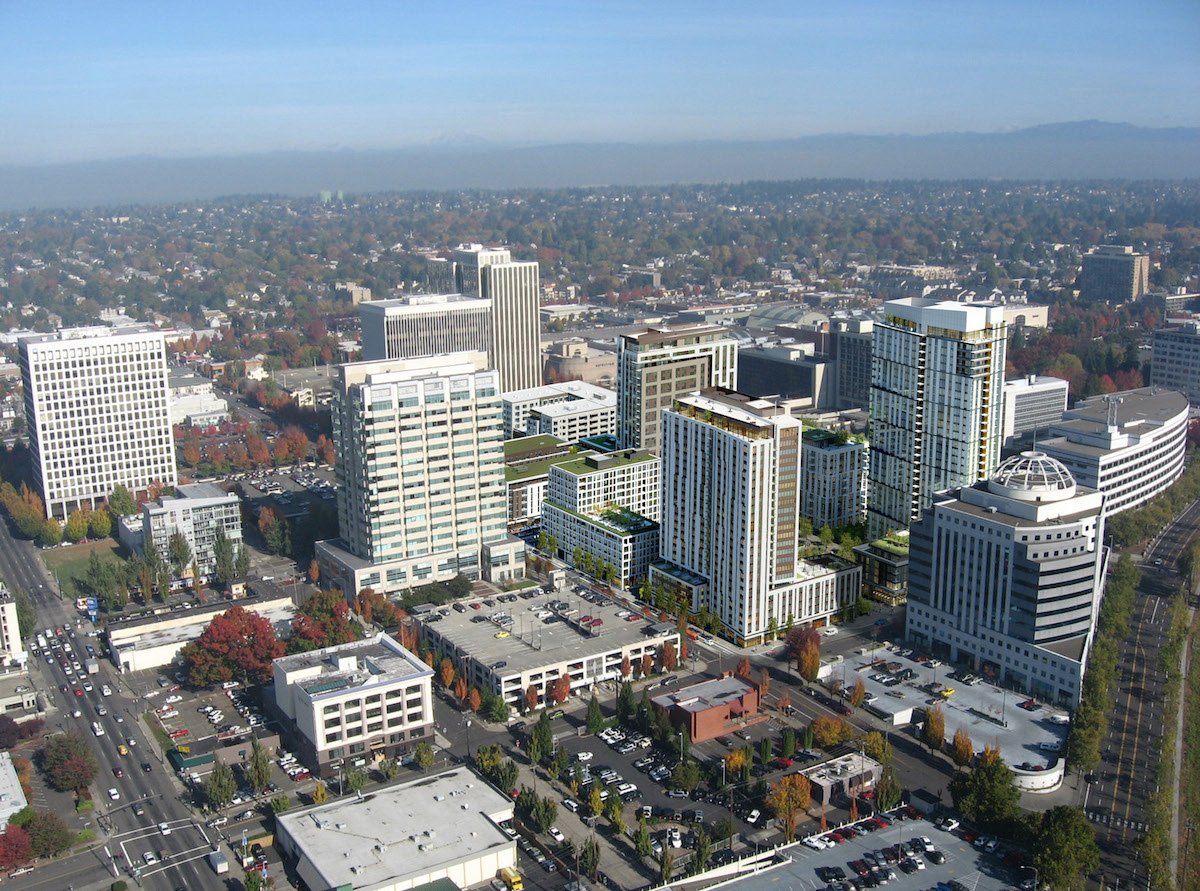
Phase I of the development will include landscaping at portals into the site at the north, west and south of the superblock, as well as the public space enclosed by blocks 90 and 91. Catenary overhead lights will be strung between blcoks 90 and 91 at the west portal. Development of the east portal and the larger public space at the east side of the superblock will take place as a part of Phase II.
Surface materials for the public space will include cast in place concrete, with three finishes including an exposed aggregate finish as used at Hassalo on Eighth. Brick pavers will be maintained on the sidewalk along the MAX line at NE Holladay St. A condition of approval by the Design Commission requires that an interactive water feature of at least 1,000 sq ft is required as part of Phase I. Both mobile seating and fixed hardwood benches will be provided. Trees to be planted include black tupelo, Carolina silverbell, zelkova, purshiana and birch. Sedges, rushes and red twig dogwoods will be used in the stormwater gardens. Flowering plants will include irises and daffodils.
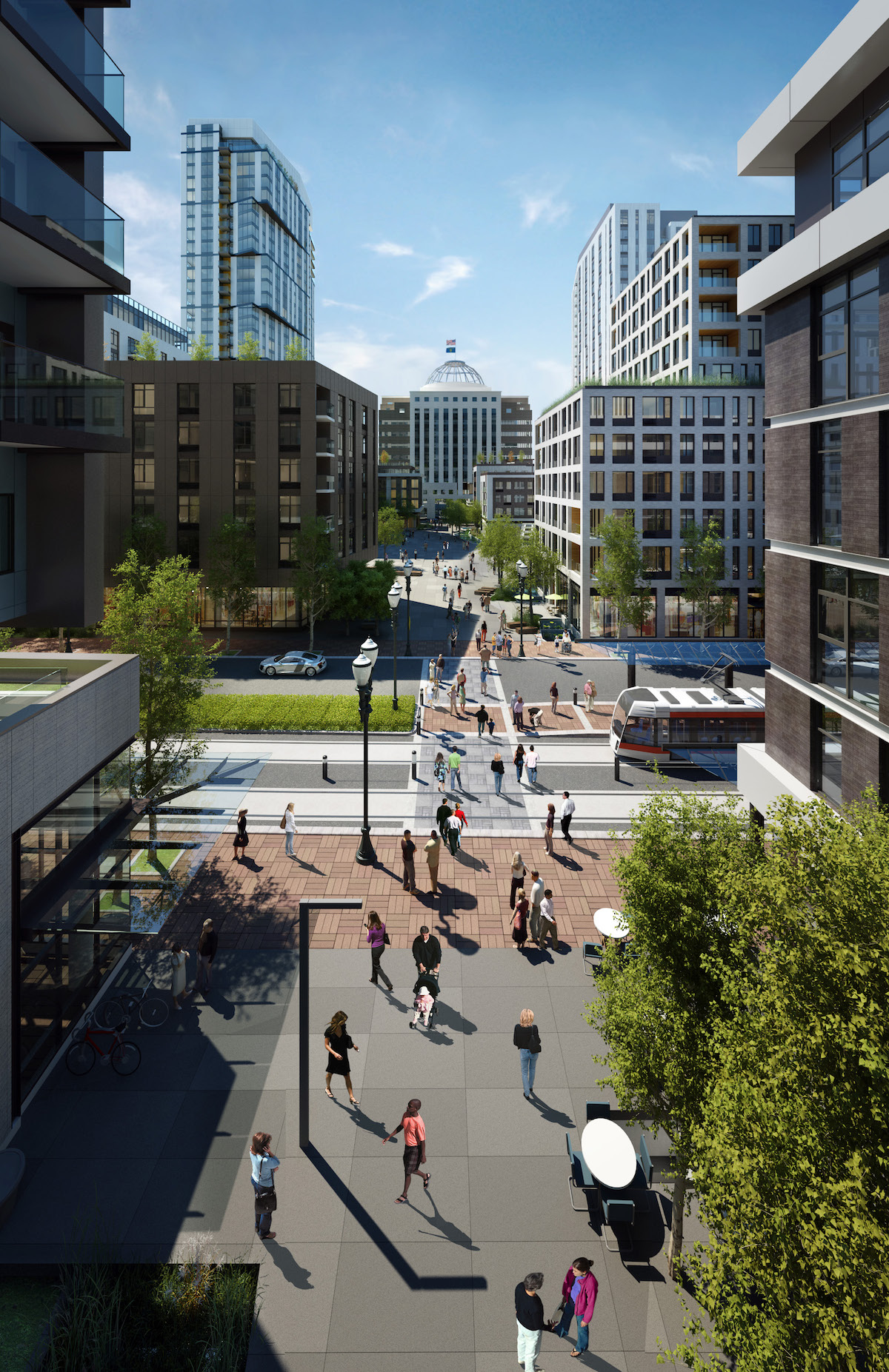
The original iteration of Oregon Square was approved by the Design Commission in November 2015. The changes required to enable the project to move forwards as a phased development were sufficient that a second Type III Design Review was required. The project went before the Design Commission twice, with public hearings held on August 25th and October 6th. Approval was gained at the second hearing.
In the conclusion to Final Findings and Decision by The Design Commission it was found that the project “will contribute a vibrant public plaza” to the Lloyd District:
The changes to the project and conditions added at the hearing on October 6th ensure the public plaza will be a successful and inviting space. The revisions to the buildings result in coherent compositions that contribute to the strong architectural towers and mid-rise buildings in Lloyd. As encouraged by the Commission, extending the continuous glazed opening on the west podium façade of Block 90 around the corner to the north façade for two bays would provide an attractive and gateway element at the west portal for pedestrians. Overall, the revised project will result in an attractive development that will contribute a vibrant public plaza to the series of open spaces within the Lloyd District.
Building permits will need to be obtained before construction on Oregon Square can begin. The architects expect to apply for building permits for Phase I in the first half of 2017, with construction beginning approximately a year from now. A condition of approval requires that permits for Phase II must be applied for within 5 years of the Design Commission’s approval. If permits for Phase II are not under review by then the buildings will be required to go through another Type III Design Review, and be subject to the requirements of zoning code in place at that time.
Further posts in this series will look at the design of the individual buildings at the phased Oregon Square.
Drawings
- Phase I – Plan – District Site
- Phase I – Plan – Parking P1
- Phase I – Plan – Ground
- Phase I – Plan – Typical Podium
- Phase I – Plan –
- Phase I – Plan – Roof
- Phase I – Elevation – North (Holladay St)
- Phase I – Elevation – South (Oregon St)
- Phase I – Elevation – West (7th Ave)
- Phase I – Elevation – South (Plaza)
- Phase I – Elevation – North (Plaza)
- Phase I – Elevation – East (Plaza)
- Phase II – Plan – District Site
- Phase II – Plan – Parking P3
- Phase II – Plan – Parking P2
- Phase II – Plan – Parking P1
- Phase II – Plan – Ground
- Phase II – Plan – Typical Podium
- Phase II – Plan – Typical Tower
- Phase II – Plan – Roof
- Phase II – Elevation – North (Holladay St)
- Phase II – Elevation – East (9th Ave)
- Phase II – Elevation – South (Oregon St)
- Phase II – Elevation – West (7th Ave)
- Phase II – Elevation – South (Plaza)
- Phase II – Elevation – West (Plaza)
- Phase II – Elevation – North (Plaza)
- Phase II – Elevation – East (Plaza)
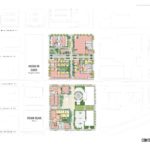
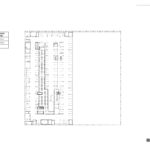
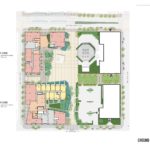
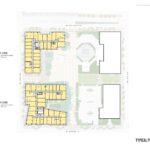
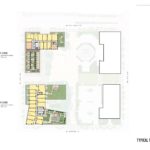
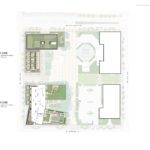
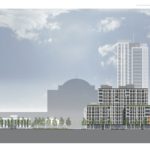
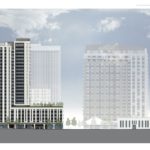
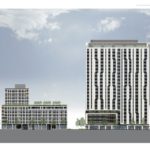
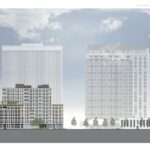
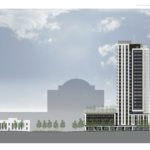
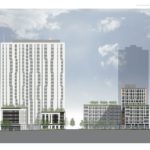
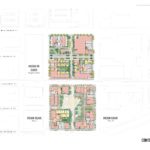
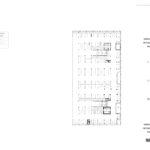
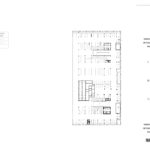
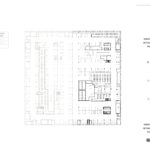
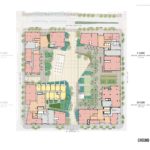
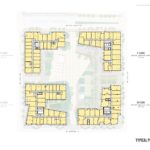
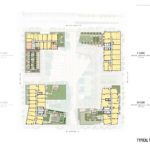
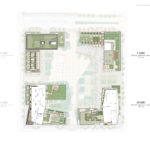
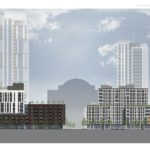
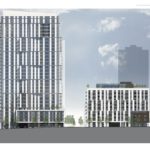
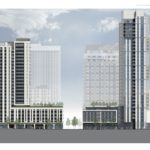
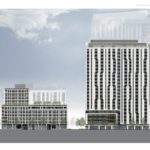
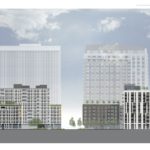
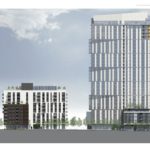
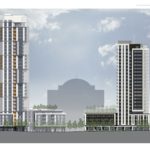
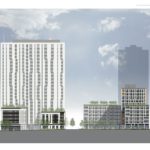
Check out that rendering showing how the plaza at the Hassalo development crosses the MAX tracks and connects to Oregon Square. It shows an almost seamless transition, with decorative paving connecting the plazas and mimicking the Holladay Street brick sidewalks standard.
The reality is not quite so elegant. Trimet recently reconstructed that crossing, eliminating any sense of connection between the two sites. A maze of barrier fences and 90 degree ramps creates an awkward transition, lacking any sense of relationship between the plazas,
https://goo.gl/maps/Hg3q2HjFVRk
With so much investment happening in the private sector, these are the types of details that we should expect to be done well by the public sector. In this case, they failed.
This crossing is truly terrible. Whenever no train is imminent, I go out of my way to ignore the barriers and ramps, stepping up and down directly from the platforms or walking in that landscaped area as well when it isn’t muddy. But I’m only able to do this as an able-bodied person, and too many people are stuck navigating the maze like rats. It’s disappointing that TriMet continues to push unfriendly designs like this in the name of “safety” (somehow people manage to cross tracks at regular street intersections without any issues, so I’m skeptical of the actual need for these changes).